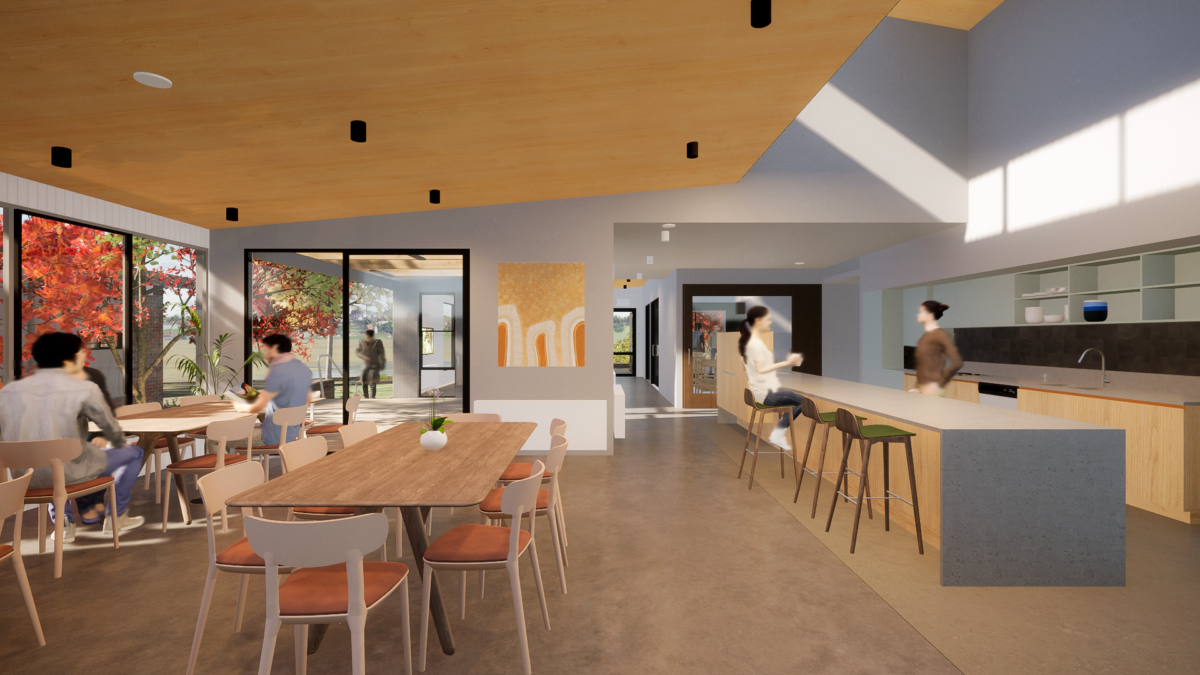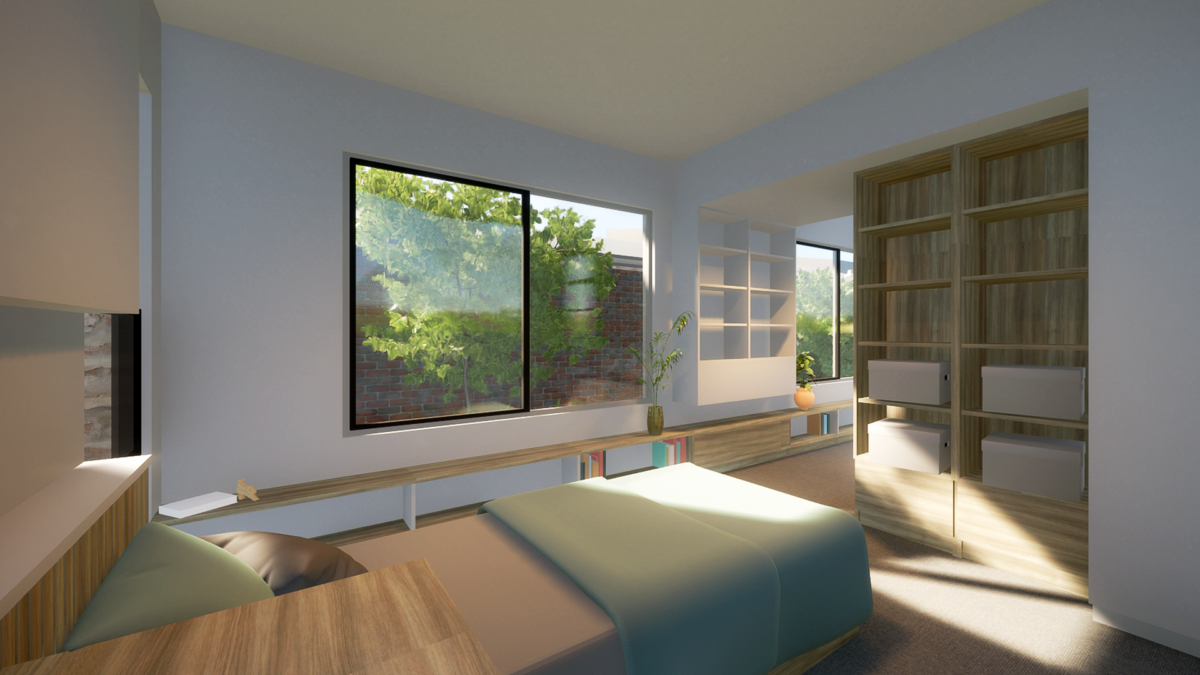
An artist’s impression of the Coombs eating disorders centre to be built in Coombs. Photos: ACT Government.
For parents like David Quilty, a new public residential care centre for sufferers of eating disorders in the ACT will hopefully save and restore their children’s lives and save them having to travel interstate for treatment and paying thousands of dollars on private facilities.
Mr Quilty joined Mental Health Minister Emma Davidson when she turned the first sod in a ceremony to mark the start of construction on the Australia-first 12-bed centre in Coombs after the project’s development application was approved last week.
The new facility, funded with $13.5 million of Commonwealth money, is expected to be completed by the middle of next year.
That won’t come too soon for Canberra and region families.
Mr Quilty, from advocacy group Eating Disorder Families Australia, said many patients had to go interstate to find acute care and private treatment facilities, including Queensland’s Wandi Nerida facility, where its successful program costs $90,000, only $30,000 of which can be recovered through private health insurance.

David Quilty from Eating Disorder Families Australia and Mental Health Minister Emma Davidson look over the site at Coombs. Photo: Ian Bushnell.
He said families could also wait six to nine months to have their child accepted at Wandi Nerida, a time many didn’t have with disorders such as anorexia nervosa having the highest mortality rate for mental health conditions in the country.
“There is a whole range of costs. Also, the care needs for families,” he said.
“If you have someone with an acute eating disorder, it really is a 24/7 caring situation, or you have to help them with meals six times a day.
“And there are other mental health conditions [sufferers have] that can be very stressful and very isolating for families and carers.”
Mr Quilty said the setting up of the Eating Disorders Clinical Hub, ongoing focus on acute services in the hospital system and now the coming residential centre was part of building services available to families in the ACT and surrounds.
The new centre will offer a similar program to Wandi Nerida, from which the ACT has drawn inspiration on how the Coombs facility will operate.

The dining hall and kitchen where patients will relearn their life skills. Image: ACT Government.
Ms Davidson said the centre would fill a significant gap in care for sufferers who needed long-term treatment but whose only alternative to being at home was in hospital.
She said the home-like environment would enable sufferers to stay connected to their families and the community and receive the care they needed at whatever stage they were at in their recovery.
“It will feel more like going into a place that’s closer to what it will be like at home, to continue your recovery, to maintain your good practices and to be able to work on how you make this recovery last,” Ms Davidson said.
Mr Quilty agreed that the home-like setting would make a difference.
“Having a facility which has the look and feel of being at home and being able to get support so that you can recover and relearn the life skills in terms of managing your life going forward is very important,” he said.
The centre would also be able to offer daycare for those not ready for the long-term approach that the centre would offer.
“We are continuing to work towards making sure that we’ve got all of the pieces in place across our Territory-wide model of eating disorder services so that we can support people to be ready to come into residential treatment,” Ms Davidson said.

The Coombs eating disorders clinic will be able to house up to 12 patients. Image: ACT Government.
The centre will be able to provide residential care for up to 12 patients and include indoor and outdoor therapy spaces, a kitchen and dining area, a lounge, consultation rooms, a treatment room and general staff areas, as well as landscaped grounds.
It is expected to have up to 10 staff, but Ms Davidson said details of the service provision were still being finalised and would be announced soon.
She said the facility would treat various eating disorders, including anorexia and bulimia, but also others less defined.
The centre’s design was based on input from community groups, families and learnings from other jurisdictions where similar facilities are being built.
Canberra-based builders IQon will construct the low-set facility on 1.2 hectares of community-zoned land off Madwick Street next to the Charles Weston School.




















